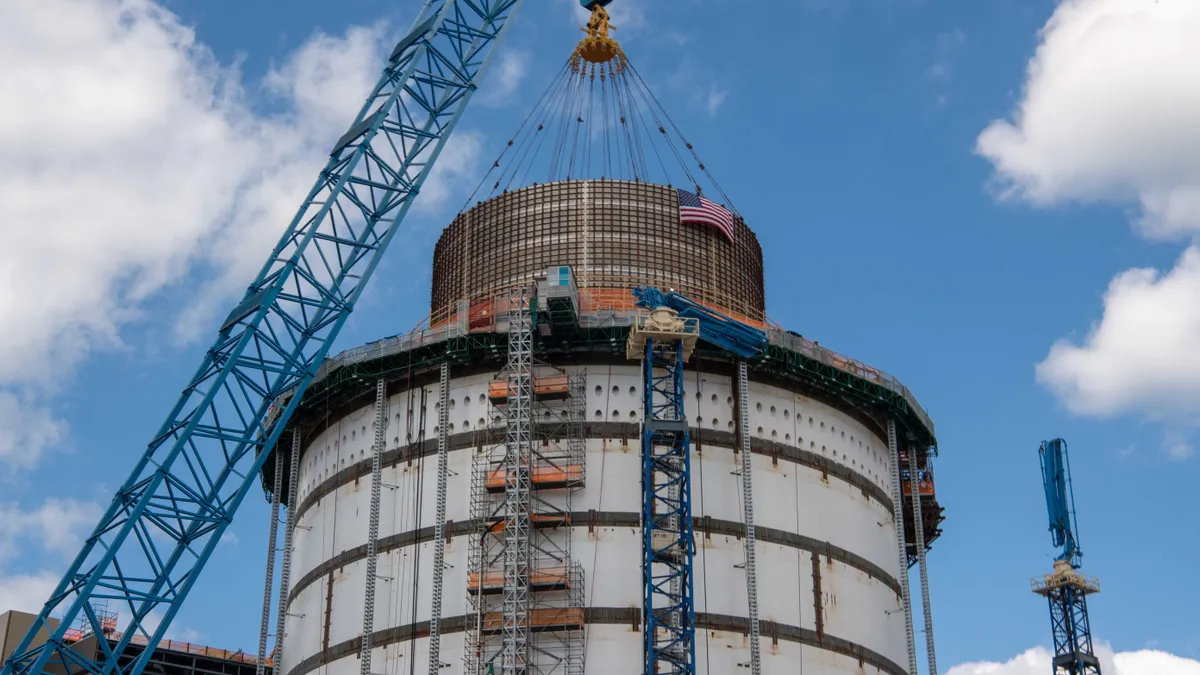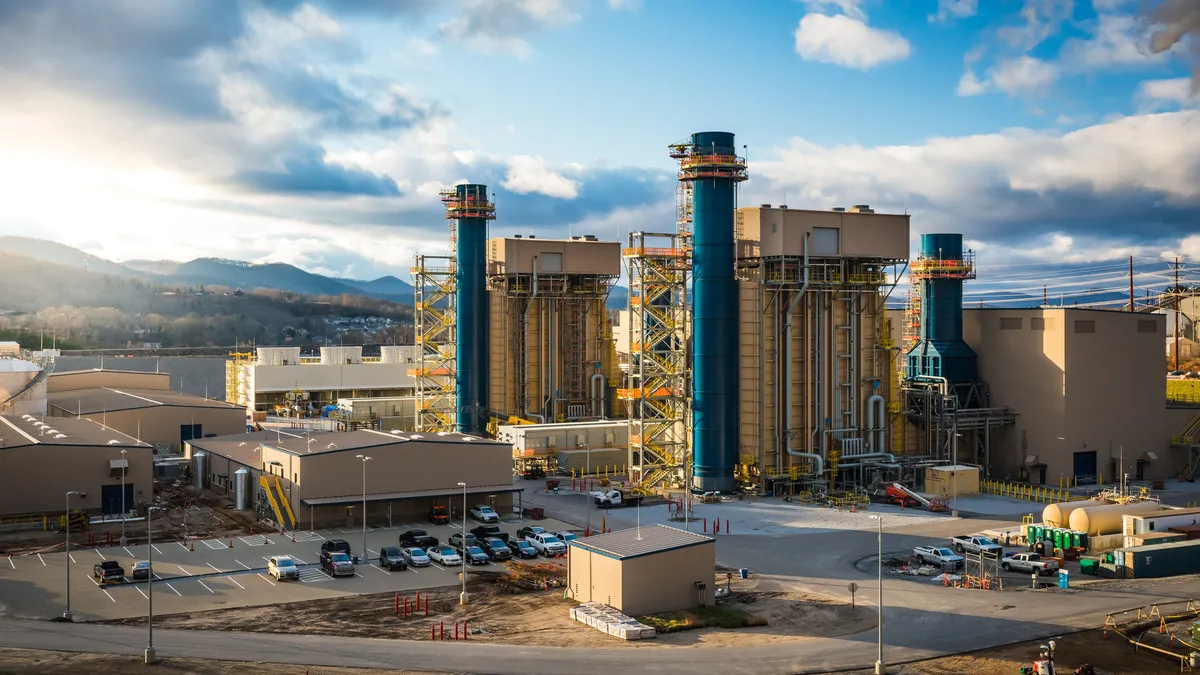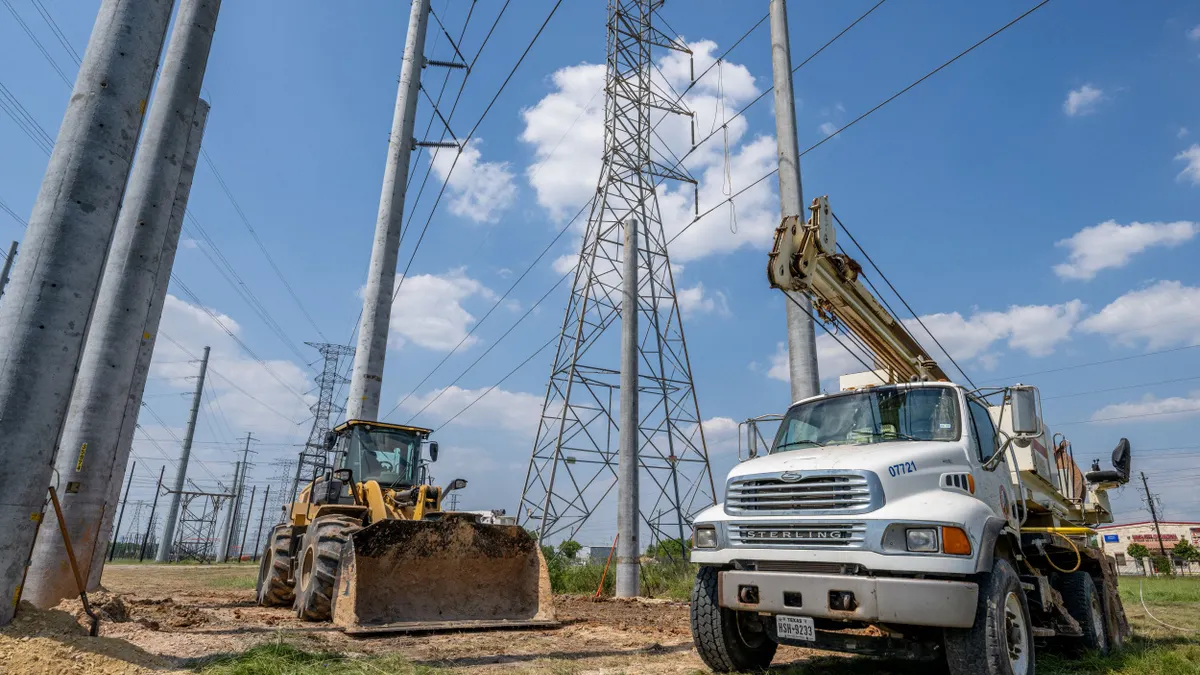When ABB, the power and automation technology titan, acquired solutions provider Ventyx for over $1 billion in 2010, it began implementing a strategy focused on providing solution sets rather than isolated products. As part of the new strategy, Ventyx hired Rick Nicholson as its vice president of transmission and distribution (T&D) solutions.
 Rick Nicholson, formerly an energy and utility industry analyst at IDC Energy Insights, will shape Ventyx's vision to create solutions to meet the present and future needs of the smart grid. Utility Dive sat down with Nicholson to discuss the current state of the smart grid, where it may be headed in the future and what Ventyx is doing to get there.
Rick Nicholson, formerly an energy and utility industry analyst at IDC Energy Insights, will shape Ventyx's vision to create solutions to meet the present and future needs of the smart grid. Utility Dive sat down with Nicholson to discuss the current state of the smart grid, where it may be headed in the future and what Ventyx is doing to get there.
Here's what he had to say:
UTILITY DIVE: How does your new role fit into Ventyx's overarching vision?
NICHOLSON: The company is going through a transition. Historically, it’s been a product-focused company. Now, Ventyx is transitioning to be much more of a solutions-focused company where we provide broader solutions that include multiple products to the target industry segments we focus on. As part of that, the company established new positions that didn’t exist before—these industry solution executives.
How do these solutions support the grid?
NICHOLSON: Let’s take outage management as an example—we’ve got an outage management system product. There’s half a dozen other vendors out there that have outage management system products. But, to take it up to a solutions level, we want to look at the entire business process that surrounds outage at a utility, starting with the planning stage through to preparation, prediction, damage assessment, restoration, repair work, reporting and compliance. In order to have a real solution for that entire life-cycle process, you need more than just a single product. You need to pull in mobile workforce and you need to pull in analytics. You need to have the portfolio of technology that enables the whole business process.
And do you think utilities are making the most of the data coming out of the smart grid?
NICHOLSON: Oh, no—I think they're realizing that they’re not making the most out of it and that’s why analytics is such a high-priority item for most of the utilities I talk to. And it’s not just smart meters. They’ve got lots of data sources—smart meters just added to that universe of data sources and they have to do something with it.
Here’s an example—we’ve got this solution called Asset Health Center and it’s being deployed at American Electric Power for their transmission substations. It’s an analytics solution that's very sophisticated. It’s taking all sorts of data around these assets, like big transformers or other equipment. Some of the data is a real-time data feed, so they are doing real-time monitoring; some of the data is historical, such as maintenance and inspection records; some of it could be coming off the SCADA system. There are multiple types of data and there are multiple sources of data.
Essentially, you’re using that to do modeling around the health of those assets and looking for ways to either reduce maintenance costs or avoid failures before they happen. It’s just a much more sophisticated way of pulling all that data together. They may have looked at all the different data separately before but, by pulling it all together in one place, they get a much more sophisticated view of the assets.
What kind of technology upgrades do you think utilities should be focusing on in both the short- and the long-term?
NICHOLSON: A lot of that is, to a certain extent, dependent on the market that a specific utility serves. If you’re looking at utilities on the East Coast, one of their biggest issues is they are seeing more frequent extreme weather events. Lining up technology upgrades around coping with that situation is going to be pretty high-priority for them.
On the other hand, you look at Southern California or most of California and their problem, or at least one of their problems, is increasing penetration of distributed energy resources. Rooftop solar, plug-in electric vehicles, that kind of stuff. That poses a different problem but it still requires technology upgrades to deal with it. The one that’s kind of universal are cybersecurity threats. Everybody’s dealing with those.
Should utilities fear being unable to recoup their long-term investments in grid infrastructure?
NICHOLSON: A lot of that will depend not only on their relationship with their regulators, but their ability to mold or evolve the regulatory model as they go forward. Because, clearly, if nothing changes from a regulatory perspective, then they are facing, potentially, an ugly situation. They could end up with the inability to recover those investments adequately. The key is they are going to have to be actively participating in evolving the regulatory model so that doesn’t happen.
How do you think increased consumer access to rooftop solar will impact the utility business model as it currently stands?
NICHOLSON: Depending on who you talk to, there may or may not be a “tipping point.” There’s a range you get into, and whether that range is 15% or 20% or whatever the penetration rate of rooftop solar is on a distribution system, that starts to cause problems. There are various aspects that utilities have to think through. One of them is, how are they going to keep those customers? The companies that are disintermediating that relationship are getting much more sophisticated.
You’ve got large solar installer leasing companies like SolarCity and SunRun and they want to have that relationship with those customers and would love to put utilities into the little “we’re the back-up power” box. So the utilities are going to have to rethink that. At the same time, and this gets back to the regulatory model, if in fact the utility positions itself as the integration platform for distributed energy, almost like an internet model, then they need to figure out how they’re going to get paid for providing that value. And getting paid for kilowatt hours is not the right way to do it.
How do you see developments in energy storage affecting that, specifically as it relates to the reliability of renewable energy?
NICHOLSON: That’s the holy grail, right? If you had affordable, reliable energy storage, then integration of intermittent sources like solar or wind becomes way easier. The problem we have right now is that it's still not affordable; it’s still really expensive. And I’m no expert on the material science and chemistry part of it, but current lithium ion battery technology isn’t going to get us there. We need a breakthrough that’s going to get us a 10 times or more increase in price performance before that is going to be widely viable. You can always find niche applications for it at a high price point, but if you really want to deploy it widely, it needs to be much better from a cost performance point of view.
How do you see Ventyx’s role evolving as the grid itself evolves?
NICHOLSON: Right now, our focus is developing solutions for the transmission and distribution lines of business in utilities as we know them. There are variations—in the U.S., it tends to be more vertically integrated; in Europe, it's more disaggregated and you have separate distribution system operators and transmission system operators. But I can see us going forward that, for instance, if microgrids really take off, and I think that’s still a question that hasn’t been answered, but lets say the concept of microgrids really takes off, then we’re going to have be developing solutions for microgrids.
How could microgrids be integrated into the U.S. energy grid?
NICHOLSON: Rght now there’s a microgrid market for military facilities like army bases. You will probably see that start to develop and have other campus type of things, like for hospitals or universities. And then, what’s after that? Well, what about treating a town or community as a microgrid? There’s the potential that, over time, you just keep carving out pieces of the grid that you want to treat as a microgrid, but that you ultimately want to be connected back into the greater grid. That’s probably how it’s going to evolve, although it’s a bit of a crystal ball.
If you were to look into a crystal ball, what do you think the grid would look like in 20 years?
NICHOLSON: I’m not one of those big believers that the grid is going to go away. I think it’s going to look significantly different. I think about it in terms of analogies. There’s a movement in IT around bring your own device (BYOD)—instead of working for a company where you’re issued a laptop and a blackberry, you bring your own tablet or smartphone or whatever and connect to the resources on the corporate network that you want to connect to.
At a very conceptual level, I think the grid’s going to look something like that. It’s going to be out there, it’s going to be the integration platform. It’s going to enable all these things, not just two-way flows of electricity. It’s going to enable micromarkets. You need a grid to enable that stuff.
Would you like to see more utility and energy news like this in your inbox on a daily basis? Subscribe to our Utility Dive email newsletter! You may also want to read Utility Dive's look at what end-user habits reveal about the smart grid.






















